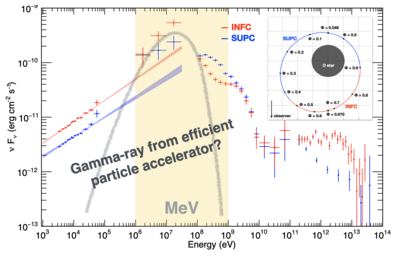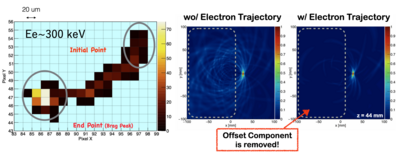Dr. Hiroki Yoneda
PostDoc Researcher

Contact:
Building: 31 (Physik Ost)
Room: 02.004
E-mail: hiroki.yoneda[at]uni-wuerzburg.de
Personal website: https://sites.google.com/site/hirokiyonedashomepage/
ORCID: https://orcid.org/0000-0002-5345-5485
Research Experience:
2023.02 – present: Postdoctoral Researcher, Julius-Maximilians-Universität of Würzburg, Germany
2020.04 – 2023.01: Special Postdoctoral Researcher, RIKEN, Japan
Educations:
2017.04 – 2020.03: Ph.D. in physics, The University of Tokyo, Japan
2015.04 – 2017.03: M.S. in physics, The University of Tokyo, Japan
2011.04 – 2015.03: B.S. in physics, The University of Tokyo, Japan
Particle acceleration in the universe through X-ray/gamma-ray observations
The detection of high-energy photons and particles has revealed that our universe is very dynamic and can accelerate particles against thermal equilibrium. The physical mechanisms and astrophysical environments behind them are key to understanding our active universe.
Especially, I am interested in extremely efficient particle acceleration in the universe. Gamma-ray binaries, a sub-class of high-mass X-ray binaries, emit high-energy photons from X-rays to TeV gamma-rays, indicating that in these systems, electrons are accelerated to TeV in a second! Recently, we analyzed the multi-wavelength spectrum of the gamma-ray binary LS 5039 and showed the dominant synchrotron emission from hard X-rays to GeV gamma-rays. It suggests electrons are accelerated quite efficiently close to the theoretical limit of electron acceleration. While we have not fully understood its physical mechanism, it shows a new aspect of our non-equilibrium universe.
The development of the data analysis framework for COSI
One of the important future observations is MeV gamma-rays. As shown in the above figure, efficiently accelerated electrons produce MeV gamma-rays, providing us with the properties of cosmic particle accelerators like gamma-ray binaries, pulsars, etc. Also, high-energy particles can excite/create/destroy nuclei, which emit line gamma-rays in the MeV band.
The Compton Spectrometer and Imager (COSI), NASA’s next SMEX mission, can achieve MeV gamma-ray observations in 0.2 - 5 MeV. Towards the launch in 2027, I am developing the data analysis framework of COSI. Extracting essential information from the complex data structure of Compton telescopes, e.g., image reconstruction, we will reconstruct the view of the MeV gamma-ray universe.
R&D for future MeV gamma-ray telescopes
Towards higher-sensitive MeV gamma-ray observations, I am also working on new technology developments. For example, I developed a new detector, called a Si-CMOS hybrid sensor, which can measure the trajectory of Compton-scattered electrons in a detector. It is a key technology to achieving electron-tracking Compton telescope in the sub-MeV regime, which can reduce background and improve the sensitivity. Also, I proposed a new algorithm for reconstructing Compton events, which can increase the efficiency and effective area of the telescopes.




